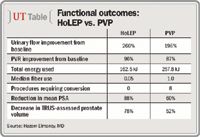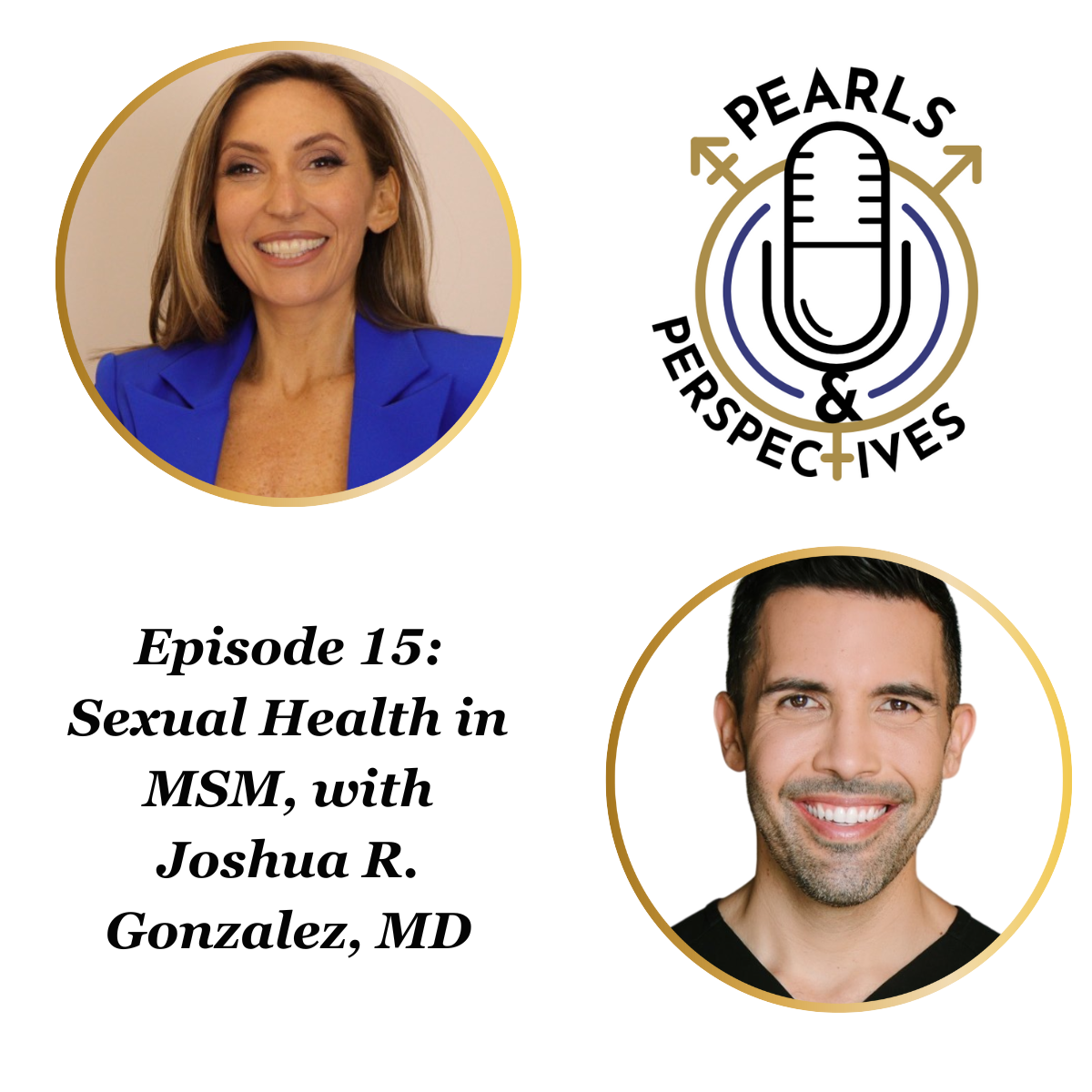Article
Study: Functional outcomes better with holmium laser enucleation of the prostate vs. photoselective vaporization of the prostate
Men with lower urinary tract symptoms (LUTS) associated with large prostates had significantly greater improvement in functional outcomes when treated with holmium laser enucleation of the prostate (HoLEP) than with photoselective vaporization of the prostate (PVP).
Montreal-Men with lower urinary tract symptoms (LUTS) associated with large prostates had significantly greater improvement in functional outcomes when treated with holmium laser enucleation of the prostate (HoLEP) than with photoselective vaporization of the prostate (PVP), data from a randomized trial showed.
A year after treatment, urinary flow was 260% from baseline in the HoLEP group compared with 196% in the PVP group (p=.02). Post-void residual (PVR) improved by 96% with HoLEP and 87% with PVP (p=.02). Prostate symptoms and quality of life improved to a similar degree in both groups.
Additionally, more than 20% of PVP cases had to be converted to other procedures, whereas all men allocated to HoLEP underwent the procedure, according to a presentation at the 2011 AUA annual meeting in Washington.

"The objective functional results are more pronounced if we correct for converted cases," he added.
The findings came from a randomized trial involving 80 men with LUTS secondary to an enlarged prostate. Prostate volume in the study population averaged about 90 mL and ranged from 62 mL to 160 mL.
Outcomes of interest included International Prostate Symptom Score (IPSS), International Index of Erectile Function (IIEF), Qmax, PVR, PSA, and transrectal ultrasound (TRUS) volume. Investigators also documented operative data and number of fibers used per procedure. Follow-up evaluations occurred at 1, 3, 6, and 12 months after surgery.

No conversion with HoLEP procedures
In eight of 37 cases, bleeding required conversion of PVP to another procedure (HoLEP or transurethreal resection of the prostate). In contrast, none of the 43 HoLEP procedures was converted (p<.0001).
Neither the type nor frequency of postoperative complications differed significantly between groups. The most common complication was urgency, affecting six patients in each group. Most complications in both treatment groups were Clavien grade 1-2, although more patients in the PVP arm had grade 3 complications.
Men treated with HoLEP had an 88% reduction in mean PSA value compared with 60% in the PVP group, and TRUS-assessed prostate volume decreased by 78% with HoLEP versus 52% with PVP.
Patients who required conversion to other procedures were still counted as part of the PVP group. An analysis of the results according to the treatment actually yielded larger differences in functional outcomes. The improvement in Qmax was 277% with HoLEP compared with 143% with PVP, and PVR improved by 97% with HoLEP versus 62% with PVP (p<.001 for both outcomes). IPSS and quality of life remained similar in the two treatment groups in the second analysis.
In general, IIEF scores did not differ significantly between groups following treatment. However, the PVP group had significant improvement in the orgasmic domain (p=.01) whereas the HoLEP arm did not.
Dr. Elhilali is a consultant/adviser for Lumenis and American Medical Systems.
Newsletter
Stay current with the latest urology news and practice-changing insights — sign up now for the essential updates every urologist needs.
















